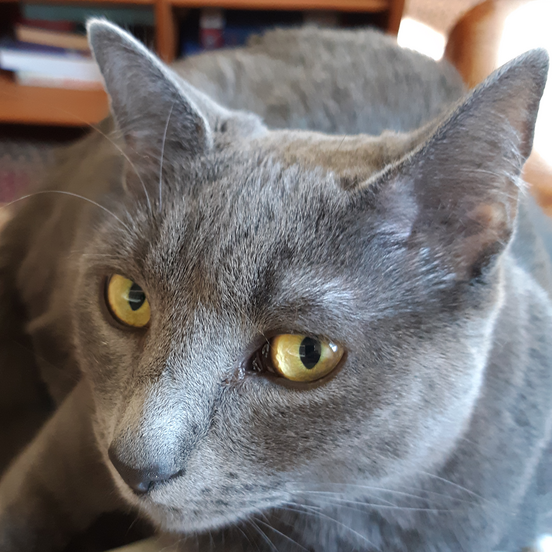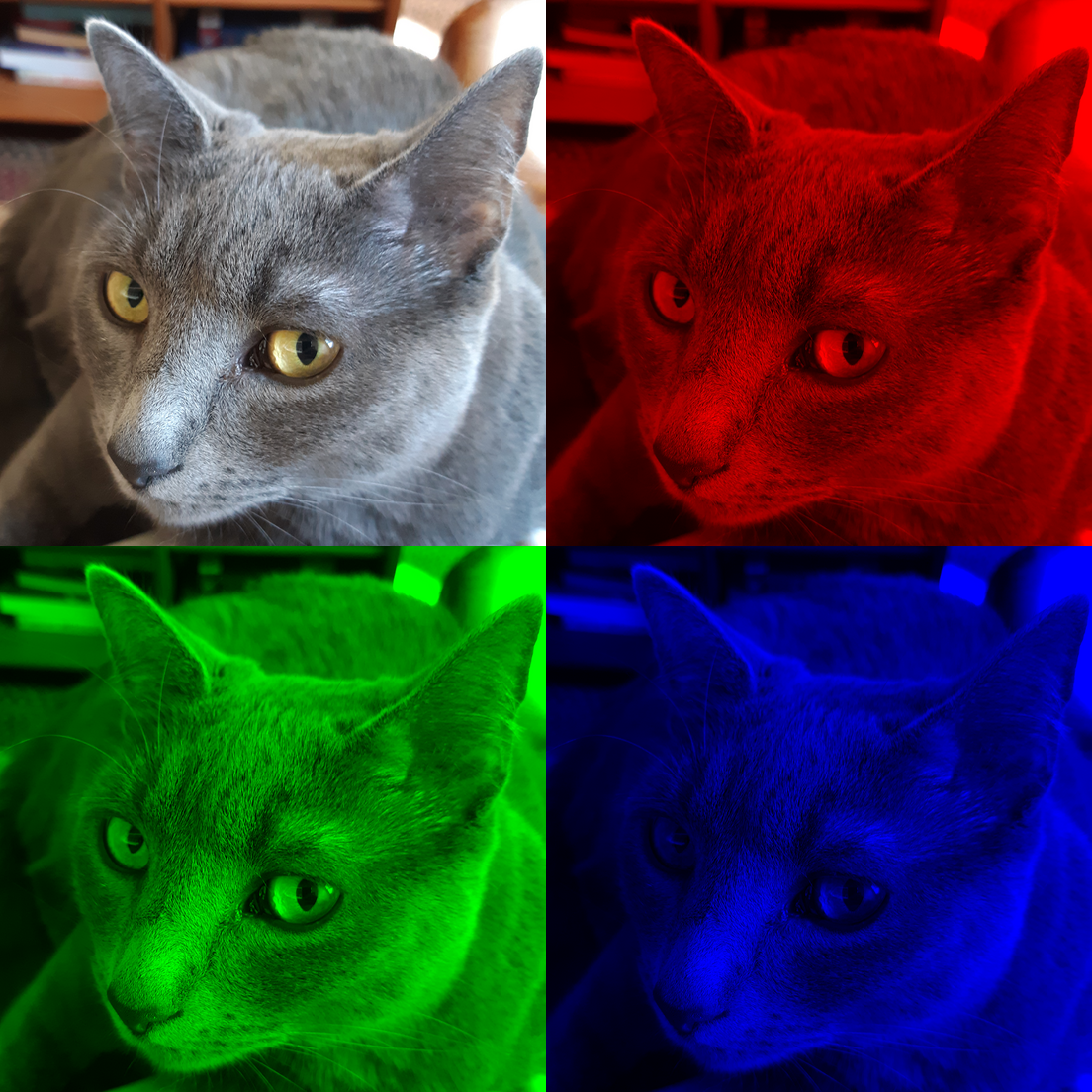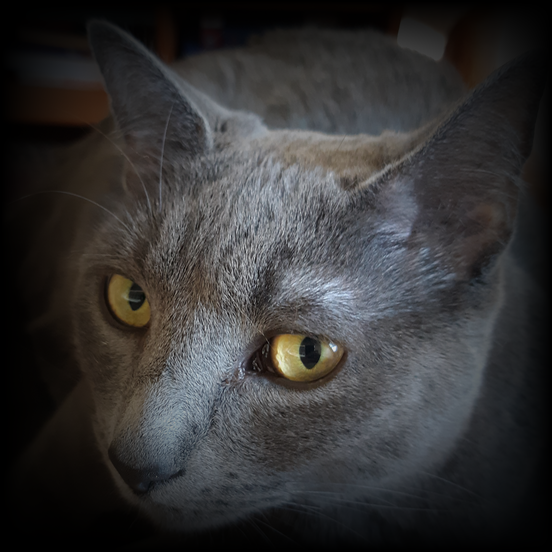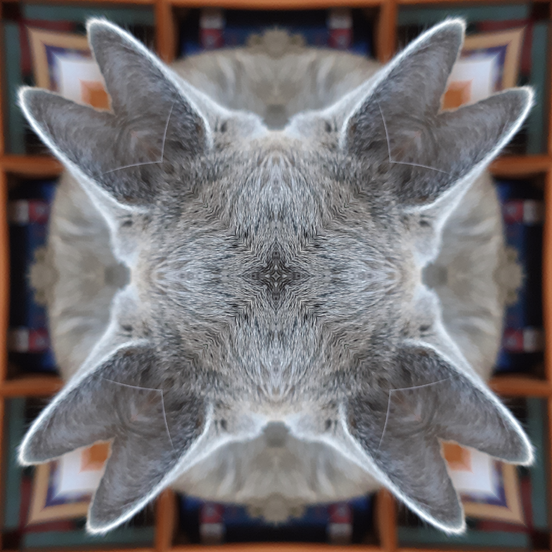Due:
- Milestone 1 due Friday, Feb 14th by 11 pm
- Milestone 2 due Friday, Feb 21st by 11 pm
- Milestone 3 due Friday, Feb 28th by 11 pm
Update 2/6: Corrected an error in the formula for the
gradient function in the fade transformation.
Update 2/7: Improved example of a comment to show register use and layout of variables in the stack frame.
Update 2/22: Changed MS3 due date to Friday, Feb 28th.
This is a pair assignment, so you may work with one partner.
Assembly language programming is challenging! Make sure
you start each milestone as soon as possible, work steadily, and
ask questions early. Also, writing unit tests and using gdb to
examine the detailed behavior of code under test will be critical
to successful implementation of the assembly language functions.
Overview
In this assignment, you will implement transformations on image files, using both C (in Milestone 1) and x86-64 assembly language (in Milestones 2 and 3.)
Milestones
In Milestone 1, you are required to implement all of the image transformations in C. You are also required to implement comprehensive unit tests for all of the helper functions you use to implement the transformations. The intent is that your assembly language code in Milestones 2 and 3 will implement the same helper functions, and your unit tests will help you gain confidence in their correctness.
In Milestone 2, you are required to implement the
grayscale and rgb
transformations in assembly language. We expect you to have comprehensive unit tests
for the assembly language implementations of your helper functions. (In theory you can
just use the ones you implemented in Milestone 1.)
In Milestone 3, you will implement the
fade and kaleidoscope
transformations.
Note that in each milestone, we expect all of the tests executed
by your unit test program to pass. For Milestone 2 in particular, you can
comment out calls to test functions that aren’t related to
helper functions needed for Milestone 2. For example, for Milestone 2 your imgproc_test.c’s
main function might have code similar to the following:
TEST( test_get_r );
TEST( test_get_g );
TEST( test_get_b );
TEST( test_get_a );
TEST( test_make_pixel );
TEST( test_to_grayscale );
//TEST( test_gradient );
The tests for get_r, get_g, get_b, get_a, make_pixel, and
to_grayscale are enabled because they are all test functions involved
in the implementations of the grayscale transformation, which is
part of the requirements for MS2. The test for gradient
is commented out because it is used in the fade
transformation, which is not part of the requirements for MS2.
Non-functional requirements
In Milestones 2 and 3, you will be writing assembly language functions. You must write these “by hand”, and your assembly code must have very detailed code comments explaining the purpose of each assembly language instruction.
A good rule of thumb is that every assembly language instruction should have a comment describing what it is intended to do.
It is not allowed to generate assembly code using a C compiler and submit this as your own code. We will assign a grade of 0 to any submissions containing compiler-generated code where hand-written assembly language is expected.
Your submission for each milestone should include a README.txt file
describing how you and your partner divided the work, and letting
us know about any interesting implementation details. If there is
functionality you weren’t able to get working completely, this is
a good place to mention that.
We expect you to follow the style guidelines. However, the expectations for function length will be relaxed considerably for your assembly language code. It is not unusual for an assembly language function to have 100 or more lines of code. In the reference solution, the longest function was about 115 lines, although there was extensive use of comments and whitespace to improve readability.
Of course, you should strive to make your assembly language functions as simple and readable as possible.
We expect your code to be free of memory errors. You should use
valgrind to test your code to make sure there are no uses
of uninitialized variables, out of bounds memory reads or writes,
etc. This applies to both your C code and your assembly code.
If any test assertions fail when you run the unit test program, that may lead to a memory leak due to one or more test objects not being freed. This situation does not count as a memory leak in your code. (However, you should definitely fix the bug that is causing the test assertion to fail.)
Grading breakdown
Milestone 1: 30%
- Implementation of C image transformation functions: 12.5%
- Unit testing of helper functions: 12.5%
- Design/coding style of C functions: 5%
Milestone 2: 45%
- Functional correctness of
imgproc_rgbandimgproc_grayscale: 30% - Unit testing of helper functions: 10%
- Design/coding style of assembly functions: 5%
Milestone 3: 25%
- Functional correctness of
imgproc_fade: 10% - Functional correctness of
imgproc_kaleidoscope: 10% - Design/coding style of assembly functions: 5%
Getting started
To get started, download csf_assign02.zip and unzip it.
You will implement the functions in c_imgproc_fns.c (Milestone 1)
and asm_imgproc_fns.S (Milestones 2 and 3.) You will also add
prototypes for helper functions to imgproc.h and implement additional
unit tests in imgproc_tests.c.
Image processing
This section describes the image format and the image transformations you will implement.
struct Image
An instance of the struct Image data type represents a grid of
pixels, where each pixel has 8-bit red, green, and blue color
component values, as well as an 8-bit alpha value.
The struct Image type is defined as follows (in image.h):
struct Image {
int32_t width;
int32_t height;
uint32_t *data;
};
The width and height fields define the width and height of an image,
in pixels. The data field is a pointer to a dynamically-allocated array
of uint32_t values, each one representing one pixel. The pixels are stored
in row-major order, starting with the top row of pixels.
A color is represented by a uint32_t value as follows:
- Bits 24-31 are the 8 bit red component value, ranging from 0–255
- Bits 16-23 are the 8 bit green component value, ranging from 0–255
- Bits 8–15 are the 8 bit blue component value, ranging from 0–255
- Bits 0–7 are the 8 bit alpha value, ranging from 0–255
This pixel data format is known as “RGBA”.
The alpha value of a color represents its opacity, with 255 meaning “fully opaque” and 0 meaning “fully transparent”.
Grayscale
In the grayscale transformation, color pixels are converted to gray pixels as follows. From the color pixel’s red, green, and blue color component values, denoted as \(r\), \(g\), and \(b\), a “gray” value, denoted \(y\), is computed using the following formula:
\[y = \lfloor (79 \times r + 128 \times g + 49 \times b) / 256 \rfloor\]The resulting gray pixel should have its red, green, and blue color component values set to \(y\), and its alpha value should be the same as the original color pixel’s alpha value.
Image transformation functions
You will implement the following image transformation functions in both C and assembly language:
void imgproc_grayscale( struct Image *input_img,
struct Image *output_img );
void imgproc_rgb( struct Image *input_img, struct Image *output_img );
void imgproc_fade( struct Image *input_img, struct Image *output_img );
int imgproc_kaleidoscope( struct Image *input_img, struct Image *output_img );
These functions are declared in imgproc.h, and each one has a detailed API
comment describing its function, the meaning of the parameters, and the
meaning of the return value (for the non-void functions.)
The grayscale transformation
The grayscale transformation converts a color image to grayscale.
The Grayscale section documents how color pixel values are converted to grayscale pixel values.
Example images (click for full size):
| Original image | Transformed image |
|---|---|
 |
 |
The rgb transformation
The rgb transformation renders four copies of the original input image.
The upper-left image is identical to the input image. The upper-right,
lower-left, and lower-right images contain (respectively) only the
red, green, and blue color components of the original image. The width
and height of the output image are (respectively) twice the width
and height of the input image, so each “quadrant” of the output image is
the same size as the input image.
Example images (click for full size):
| Original image | Transformed image |
|---|---|
 |
 |
The fade transformation
In the fade transformation, the intensity of each pixel is modified so that
pixels “fade out” the closer they are to the edges of the image.
Example images (click for full size):
| Original image | Transformed image |
|---|---|
 |
 |
The transformation should be implemented as follows.
The gradient function takes a pixel row or column coordinate and yields a value indicating how intense the pixels at that row or column should be, based on their proximity to an edge of the image. It is defined as
\[\mbox{gradient}(x,n) = 1{,}000{,}000 - (\lfloor (2{,}000{,}000{,}000 \times x) / (1{,}000{,}000 \times n) \rfloor - 1{,}000)^{2}\]where \(x\) is the index of a pixel row or column and \(n\) is the number of pixels in that row or column (i.e., the height or width of the image.) The result of the gradient function is a value between \(0\) and \(1{,}000{,}000\), where \(0\) means that the pixel will be entirely faded (black), and \(1{,}000{,}000\) means that the pixel is displayed unmodified.
The gradient function is mapping a pixel coordinate value to the range \(0..2000\), and then selecting a value along an inverted parabola, so that the extreme values are 0 and the middle value is \(1{,}000{,}000\).
Because each pixel has two coordinates (column and row), the transformation will compute two gradient values for each pixel. Let’s call them \(t_{r}\) for the row gradient value and \(t_{c}\) for the column gradient value. For each color component value \(c\), a modified color component value \(c'\) should be computed as
\[c' = \lfloor (t_{r} \times t_{c} \times c) / 1{,}000{,}000{,}000{,}000 \rfloor\]Doing this computation for each of a pixel’s color component values (red, green, and blue) yields the color component values for the result pixel. (The alpha value of the original pixel should be used unmodified.)
Note that because these computations will involve large integer values, you should use signed 64-bit arithmetic to implement them.
Integer operations have the obvious disadvantage that fractions can’t be
represented directly, and any division that results in a quotient less than 1
will yield the value 0. Fixed point arithmetic is the idea that we
emulate fractions by making our integer values represent a count of fractions of a whole.
For example, if we use integer values to represent US currency with the
interpretation that 1 represents one dollar, then we can’t represent any
amount of money less than one dollar. However, if we represent currency values
with the interpretation that 1 represents one cent, then it is possible
to represent fractions of one dollar with 1 cent as the precision.
The fade transformation applies this idea by using the integer values
\(0..1{,}000{,}000\) to stand in for coefficients in the range \(0..1\)
in order to “smoothly” fade the pixel intensities in the image.
The kaleidoscope transformation
In the kaleidoscope transformation, which can be applied only to images
which are square (width and height are the same), the original image is
divided into 8 “wedges”:
The transformation can be described this way:
- The pixels of the wedge labeled “A” are copied to the wedge labeled “B” by swapping their horizontal and vertical coordinates; i.e., they are mirrored along the diagonal separating A and B
- All of the other wedges are filled with copies of the pixels in A, such that all pixels are mirrored along all four dividing lines (horizontal, vertical, and the two diagonals)
Another way to look at point 2 above is that wedges A and B describe one quadrant of the image (the upper left), and that each of the other quadrants are “reflections” of the upper left quadrant, mirrored either horizontally (the upper right), vertically (the lower left), or both horizontally and vertically (the lower right.)
Also note that in point 1, which describes how pixels in wedge A are replicated in wedge B, the pixels along the diagonal separating wedges A and B are not modified.
As a special case, if width/height of the image is odd, meaning that the quadrants of the image can’t be exactly the same size, the transformation should round up the width and height to the next larger even value, and “pretend” that the original image had those dimensions. For example, for a 785x785 image, the transformation should “pretend” that it’s really a 786x786 image. You will need to take care to avoid out of bounds array accesses if the effective width and height are rounded up in this way.
Example of the kaleidoscope transformation:
| Original image | Transformed image |
|---|---|
 |
 |
c_imgproc and asm_imgproc programs
The c_imgproc and asm_imgproc programs apply one of the image transformations
to an input image (or, in the case of the composite transformation, two input images),
and write the result to an output image file. The c_imgproc_main.c source file
implements both of these programs. The only difference between c_imgproc and
asm_imgproc is whether the image transformations are implemented in C
(c_imgproc_fns.c) or x86-64 assembly language (asm_imgproc_fns.S.)
To run these programs:
./c_imgproc transformation input.png output.png
./asm_imgproc transformation input.png output.png
In these commands:
transformationis the name of the image transformation to performinput.pngis the name of the input image fileoutput.pngis the name of the output image file to write
For example, to run the rgb transformation using the c_imgproc program:
mkdir -p actual
./c_imgproc rgb input/ingo.png actual/c_ingo_rgb.png
The commands in this example would apply the rgb transformation on the input image
input/ingo.png to produce the output image file actual/c_ingo_rgb.png.
Unit tests, helper functions
The source file imgproc_tests.c is a unit test program that you should use to
test the functions in c_imgproc_fns.c and asm_imgproc_fns.S.
The starter code has some very basic tests for the API functions implementing the various image transformations. However, you will need to write unit tests for your helper functions. The idea is that your assembly language code will implement exactly the same helper functions as your C code, and having a comprehensive set of unit tests for these helper functions will allow you to get your assembly code working incrementally by implementing the helper functions one at a time.
Having a good set of unit tests for your helper functions is essential for being able to make steady progress towards getting your assembly code to work in Milestones 2 and 3.
You are free to implement whatever helper functions make sense. The reference implementation defined the following helper functions:
uint32_t get_r( uint32_t pixel );
uint32_t get_g( uint32_t pixel );
uint32_t get_b( uint32_t pixel );
uint32_t get_a( uint32_t pixel );
uint32_t make_pixel( uint32_t r, uint32_t g, uint32_t b, uint32_t a );
uint32_t to_grayscale( uint32_t pixel );
int64_t gradient( int64_t x, int64_t max );
int32_t compute_index( struct Image *img, int32_t col, int32_t row );
Image tests
The provided script run_all.sh runs your c_imgproc or asm_imgproc program
on some example input images and checks whether a correct output image
is produced. To run it:
# test the C implementations of the image transformations
./run_all.sh c
# test the assembly implementations of the image transformations
./run_all.sh asm
Hints and tips
x86-64 tips
Here are some x86-64 assembly language tips and tricks in no particular order.
Callee-saved registers are your best option to serve as local variables
in your assembly language functions. The callee-saved registers are
%r12, %r13, %r14, %r15, %rbx, and %rbp. If you are going
to store data in a callee-saved register, make sure that you use pushq
to save its value at the beginning of the function, and popq to restore
its value at the end of the function. (The popq instructions must be in
the opposite order as the pushq instructions.)
If you run out of callee-saved registers, then you can use memory in the
stack frame to store local variables. We highly recommend using an ABI-compliant
stack frame to reserve memory for local variables, since that will allow
gdb to properly recognize the functions on the call stack. To do so,
your function’s prologue code should look like this:
pushq %rbp
movq %rsp, %rbp
subq $N, %rsp
...push callee-saved registers...
This prologue will reserve N bytes of memory in the stack frame that
you can use for local variables. Note that all local variables in memory
should be accessed at negative offsets from %rbp. For example, if you
reserved 16 bytes for local variables, and you need space for four 4-byte
variables, you can refer to them as -4(%rbp), -8(%rbp), -12(%rbp),
and -16(%rbp).
Don’t forget that the amount by which the stack pointer is
changed needs to be an odd multiple of 8 (so 8, or 24, or 40, etc.),
and that each pushq subtracts 8 from %rsp.
Also, don’t forget to pop back the original values of any saved
callee-saved registers, including %rbp. In general, your function
epilogue code should look like
...pop callee-saved registers...
addq $N, %rsp
popq %rbp
Don’t forget that you need to prefix constant values with $. For example,
if you want to set register %r10 to 16, the instruction is
movq $16, %r10
and not
movq 16, %r10
When calling a function, the stack pointer (%rsp) must contain an address
which is a multiple of 16. However, because the callq instruction
pushes an 8 byte return address on the stack, on entry to a function,
the stack pointer will be “off” by 8 bytes. You can subtract 8 from
%rsp when a function begins and add 8 bytes to %rsp before returning
to compensate. Pushing an odd number of callee-saved registers also works,
and has the benefit that you can then use the callee-saved registers freely
in your function. Sometimes you may need to subtract 8 from %rsp even
if your function doesn’t allocate storate for any local variables in memory,
just to ensure that %rsp is aligned correctly.
We strongly recommend that you have a comment in each function explaining
how it uses callee-saved registers and stack memory, since these are
the equivalent of local variables in assembly code. For example,
here is a comment taken from the implementation of the imgproc_fade
function in the reference solution:
/*
* Register use:
* %r12d - i (pixel row index)
* %r13d - j (pixel column index)
* %r14 - pointer to input Image
* %r15 - pointer to output Image
* %rbx - computed pixel fade factor (row factor * col factor)
*
* Stack memory:
* -4(%rbp) - current pixel value
* -8(%rbp) - pixel r component value (from get_r)
* -12(%rbp) - pixel g component value (from get_g)
* -16(%rbp) - pixel b component value (from get_b)
* -20(%rbp) - pixel a component value (from get_a)
* -24(%rbp) - computed pixel index
* -32(%rbp) - computed row factor (from gradient fn)
*/
Recall that your assembly language code must have detailed comments explaining each line of assembly code. The following example function illustrates the level of commenting that we expect to see:
/*
* Determine the length of specified character string.
*
* Parameters:
* %rdi - pointer to a NUL-terminated character string
*
* Returns:
* number of characters in the string
*/
.globl str_len
str_len:
/* prologue to create ABI-compliant stack frame */
pushq %rbp
movq %rsp, %rbp
.Lstr_len_loop:
cmpb $0, (%rdi) /* found NUL terminator? */
jz .Lstr_len_done /* if so, done */
inc %r10 /* increment count */
inc %rdi /* advance to next character */
jmp .Lstr_len_loop /* continue loop */
.Lstr_len_done:
movq %r10, %rax /* return count */
/* epilogue */
popq %rbp
ret
As illustrated in the example function, labels for control flow
should be local labels, with names beginning with “.L”.
If you don’t use local labels within functions, debugging with
gdb will be difficult because gdb will think that each control
flow label is the beginning of a function.
Debugging tips
You primary means of determining whether or not your code works correctly
is running the unit test programs (c_imgproc_tests and asm_imgproc_tests.)
If a unit test fails, you should use gdb to debug the code to determine
why it is not working.
Setting a breakpoint on the specific test function that is failing is
one way to start. For example, if the test_to_grayscale test function
is failing, in gdb set a breakpoint on that function, then run the
program so that it only runs that test function:
break test_to_grayscale
run test_to_grayscale
You will gain control of the program at the beginning of the test function, at which point you can step through the code, inspect variables, registers, and memory, etc.
Another good option for setting a breakpoint is the tctest_fail
function, because this is the function called when a test assertion
fails. For example, assuming test_to_grayscale has an assertion failure:
break tctest_fail
run test_to_grayscale
When the tctest_fail breakpoint is reached, use the up command (as many
times as needed) to enter the stack frame for the failing assertion.
This can allow you to check variables at the location of the assertion.
Don’t forget that you can inspect register values in gdb by prefixing the
register name with the “$” character. For example:
print $ebx
would show you the contents of the %ebx register. Using print/x allows
you to see integer values in hexadecimal (very useful for checking color values.)
Casting a register to a pointer allows you to interpret memory as values
belonging to C data types. For example, let’s say %r10 points to a
struct Image instance. You could check the value of the element
at index 18 of the data array using the command
print/x ((struct Image *)$r10)->data[18]
If you are storing local variables in stack memory, and using %rsp to
access them, it is easy to see their values. In particular, if all of the
local variables are the same size and type (e.g., they are all
4-byte integers), then you can think of them as an array.
For example, in the comment above about local variable allocation,
there are 7 local variables allocated in stack memory, six of which
are 4 byte integer values, and one of which is an 8 byte integer value.
We can see the six four-byte values at once with the gdb comamnd
print (unsigned [6]) *((unsigned *)($rbp - 24))
Here we are pretending that these variables belong to the unsigned type,
which is the same as the uint32_t type. The (unsigned [6]) at the
beginning of the expression tells gdb that we are interpreting the
memory as an array of 6 unsigned elements. We use the expression
$rbp - 24 to compute the address of the beginning of the
area containing the 4-byte variables,
because it is 24 bytes in size, and %rbp points to the “top”
of the area. Note that the print command will show the values of the local
variables starting with the local variable with the “lowest” address, i.e.,
the one referred to as -24(%rbp).
We can see the 8 byte value in memory (at offset -32 from %rbp)
using the gdb command
print (unsigned long) *((unsigned long)($rbp - 32))
Submitting
Before you upload your submission, make sure that your README.txt
contains the name of each team member and a brief summary of each team member’s
contributions to the submission. If there is anything you would like us to
know about your submission, you can also add it to README.txt.
To prepare a zipfile for submission, run the command
make solution.zip
Please do not submit object files, executables, PNG image files,
or other files not mentioned above. (If you use make solution.zip
as recommended above, only the necessary files will be included in
the zipfile.)
Upload the zipfile to Gradescope as Assignment 2 MS1, Assignment 2 MS2, or Assignment 2 MS3, depending on which milestone you are submitting.